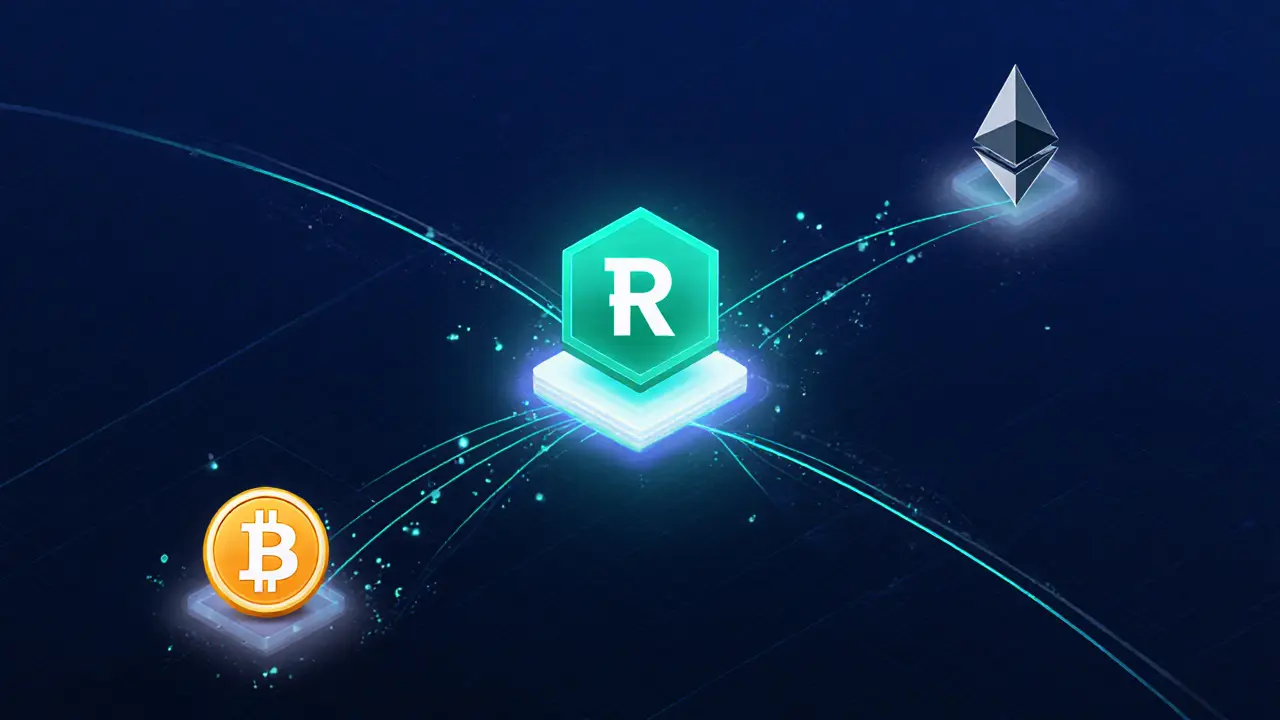Ren cryptocurrency – fast cross‑chain DeFi token
Ren cryptocurrency is gaining traction as the go‑to solution for bringing real‑world value into DeFi.
When working with Ren cryptocurrency, a protocol that moves Bitcoin, Bitcoin Cash and other assets onto Ethereum and other chains. Also known as RenVM, it powers seamless cross‑chain swaps without custodial bridges.
Key components of Ren’s ecosystem
RenVM, the decentralized virtual machine that validates and secures cross‑chain transactions runs a network of dark‑node operators who stake REN tokens to guarantee uptime. Its design lets developers lock Bitcoin on one chain and mint a wrapped version on another, unlocking liquidity for lending, trading, and yield farming.
cross‑chain bridge, technology that connects separate blockchains so assets can move freely is the backbone of Ren’s ecosystem. By using zero‑knowledge proofs and threshold signatures, the bridge avoids trusted intermediaries, reducing fees and attack vectors. This means a user can send Bitcoin to an Ethereum DEX in minutes, not days.
Ren’s native token, REN, the utility token that fuels staking, governance and fee payments, has a fixed supply of 1 billion. A portion of every transaction fee is routed to REN stakers, creating a direct incentive to secure the network. Token holders also vote on protocol upgrades, making the system community‑driven.
Because RenVM can wrap assets like BTC, BCH and ZEC, developers create synthetic tokens (e.g., renBTC) that behave like the original on any EVM‑compatible chain. These wrapped tokens are used as collateral on lending platforms, as liquidity on decentralized exchanges, and even as collateral for stablecoins. The result is a broader DeFi market that isn’t limited to Ethereum‑only assets.
Security is a core concern. RenVM’s threshold signatures split private keys among dozens of nodes, so no single actor can steal locked funds. Audits from firms such as Quantstamp and OpenZeppelin have validated the cryptographic design, and the network has processed billions of dollars in value without major incidents.
Regulatory outlook matters for anyone planning to build on Ren. The protocol is permission‑less, but projects that issue wrapped tokens often need to consider local securities laws. Ren’s off‑chain governance model lets the community propose compliance‑friendly features, like whitelisting certain jurisdictions for minting.
Use cases keep expanding. From cross‑chain NFT marketplaces that accept BTC to decentralized finance aggregators that source the best rates across chains, Ren’s bridge provides the connective tissue. As more Layer‑2 solutions launch, RenVM’s ability to move assets between L1 and L2 will become a competitive advantage.
Below you’ll find in‑depth articles covering everything from Ren’s licensing considerations to tokenomics analyses, exchange reviews, and the latest airdrop updates. Whether you’re a developer, trader, or just curious about how Bitcoin can live inside DeFi, the collection offers actionable insights to help you navigate the Ren ecosystem.

What is Ren (REN) crypto coin - Explained
Aug 25, 2025, Posted by Ronan Caverly
Learn what Ren (REN) crypto coin is, how RenVM enables trustless cross‑chain transfers, the role of the REN token, Darknode security, and real‑world use cases.
MORESEARCH HERE
Categories
TAGS
- decentralized exchange
- crypto exchange review
- cryptocurrency
- crypto coin
- CoinMarketCap airdrop
- smart contracts
- tokenomics
- cryptocurrency exchange safety
- crypto exchange
- cryptocurrency airdrop
- crypto airdrop
- cryptocurrency exchange
- crypto airdrop guide
- blockchain token distribution
- DeFi
- crypto exchange scam
- crypto airdrop 2025
- Ethereum
- cross-chain interoperability
- ERC-20
